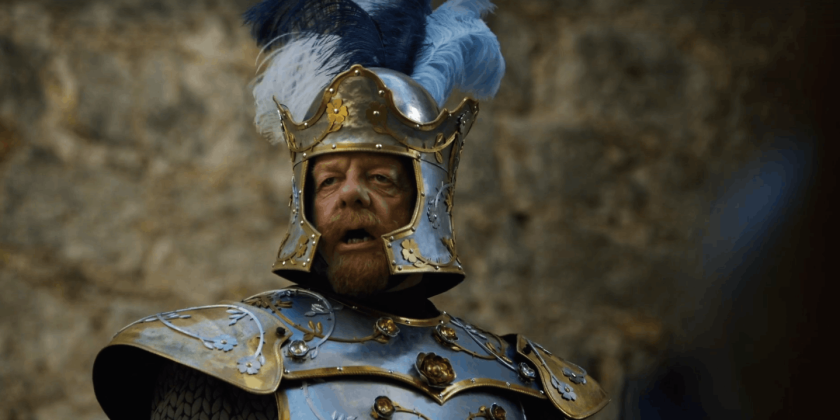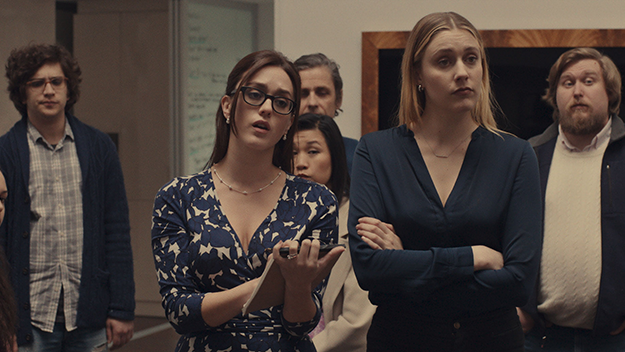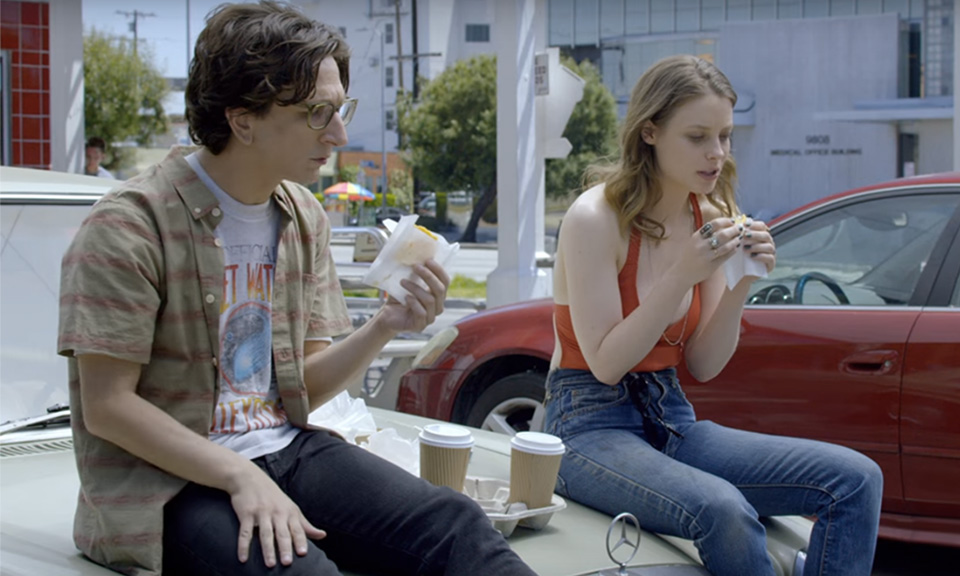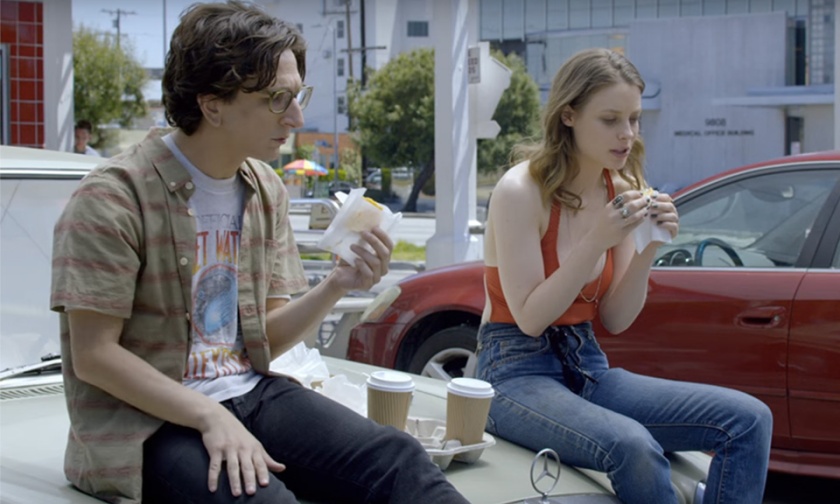WARNING: This review of Season Six of Game of Thrones is full of SPOILERS! Lots of them! Note that I have not read the books, but after the end of season five, have spent a fair amount of time on A Wiki of Ice and Fire because I’m impatient.
By its own high standards, the last season of Game of Thrones (Season Five) was an utter disaster. It was also the first season where the show went decidedly off-book, combining elements of two apparently scattershot sources into one while making up its own shortcuts along the way. It gave us the infuriatingly bland Dorne storyline, an increased focus on Ramsay Bolton’s uninteresting brand of sadism, the faceless Sons of the Harpy, and a dragon ride that looked like something out of The Neverending Story. It wasn’t all a waste; Stannis’ arc was dark but fantastic, and the battle of Hardhome is likely the single best sequence the show has ever done. However, every attempt to expand the word (except perhaps Arya’s) fell completely flat. Given that Season Six was now completely off-book, it would be reasonable to assume it would only get worse from here. However, it course-corrects by collapsing the world instead of continually expanding it, both setting up Season Seven wonderfully and standing as the most satisfying season the show has ever had. It’s a comfortable season in a way, only once really throwing caution to the wind, but even if the narrative is no longer as daring as it once was, Thrones earns its position as must-see TV.
Game of Thrones can be a difficult show to discuss broadly, simply because there are so many characters spread out over such a large distance, both narratively and physically. Season Six corrects much of this almost immediately, bringing together Brienne, Davos, Melisandre, Jon, and Sansa by the fourth episode. Two of the Starks reuniting at last is particularly satisfying, and while the Jon/Sansa story ends with a beautiful if nonsensical battle sequence, having the two characters together again is magnificent (and inspired; Jon/Arya, Sansa/Arya, or even Jon/Theon are the more obvious reunions to stage, but Jon/Sansa allows us a character pairing that was never really explored before but still harkens back to the beginning of the show). In perhaps the weakest point of the season, a carryover from the last, Dany remains separated from Mereen, where Tyrion, Varys, Missandei, and Grey Worm sit in big rooms and talk about nothing. Varys gets one fantastic scene where he attempts to rebuild his network, but otherwise there is no air left in the Mereen scenes. Dany’s reunion with the Dothraki, on the other hand, works by bringing in familiar things, and when the whole gang gets together at the end (along with some others), it leads to an incredibly satisfying ending, even if its a season-and-a-half overdue.
Even when characters are sent off, its not usually to meet new ones, but to bring together old combinations. Jamie repopulates Cersei’s circle for a while, but is sent off to Riverrun to break a Tully siege. This brings the long-abandoned characters of Walder Frey, Edmure Tully, and the Blackfish back into the fold at last, and also gives us Jamie/Brienne and Bronn/Podrick reunion. We return to Bran north of the wall, where his warging ability is used to fill in gaps in our knowledge about the realm (only slightly more elegantly than outright flashbacks), and another long-lost character re-emerges. Most dramatically, the Hound re-appears with a group of new characters, who are lent credence by the presence of Ian McShane and the fact that they link into Cersei’s current struggle by showing another side of the Seven. And, once again, they quickly dovetail into abandoned parts of the narrative by bringing back the Brotherhood Without Banners, led by Beric Dondarrion. Relatively few new arcs are created, but old arcs are allowed to pay off and loose ends tied off. Some of these are unsatisfying; the ends of the Blackfish and Osha the wildling are rather unfortunately tossed off, despite the two being interesting characters anchored by charismatic performances. But by-and-large the contraction of the world is propels the narrative forward, which is very preferable to the meandering of the last couple seasons. Even Dorne benefits from this; the storyline only appears twice, once to necessarily close a few dangling threads, and a second time to ally them with more interesting characters and bring them into a storyline that actually might be interesting.
It’s hard to overstate how great it is to have The Hound back. In his second episode, when he calls a generic bad guy out for being “shit at dying”, Thrones operates on a darkly humorous level it occasionally reaches elsewhere in the season with Zombie Mountain and WunWun the Giant. The Hound and The Mountain and violent and, in the latter case especially, reprehensible characters, but The Hound’s pragmatic violence stands in stark contrast to the brutal sadism of characters like Ramsay Bolton. Violence on Thrones is, for lack of a better word, fun again.
Ramsay gets to be the worst again for the first half of the season, but thankfully disappears until the Battle of Winterfell, aka the Battle of the Bastards, which is perhaps the worst of the major battle episodes Thrones has done (ranking: Hardhome, Blackwater, Watchers on the Wall, Bastards). Even the Knights of Vale’s last minute arrival feels exactly like Blackwater four seasons ago. The Starks face great losses, but triumph over Ramsay, and while its great to see “good” get a win, its a Pyrrhic one made to look clean in post. A lot could be made of Jon’s strategical blunders, which get a lot of men killed, but its swept under the table swiftly. When the Northerners proclaim him King in the North, the rah-rah moment is deflated not only because of Sansa’s potential claim, but because he had just proven himself a great warrior but not a particularly even-headed leader. That being said, Ramsay’s sadism pays off a bit with his treatment of Rickon, even if its a bit unbelievable that Jon would fall for this trick there, and it has some beautiful images from director Miguel Sapochnik.
Arya’s Braavos and Dany’s Mereen storyline also come to a close in satisfying ways. It’s arguable whether Arya gained much as a character after the past two seasons, but I’d argue she has grown incredibly, and the moments in Braavos are so well filmed and so engaging that I wouldn’t want to see them shortened. A lot has been made of the disappointing dispatching of The Waif, but the final moment of imply-don’t-show worked perfectly for me, and Arya’s time spent watching a dramatic re-interpretation of Season One was hilarious and one of the only world-building steps of the season. Meanwhile, its fantastic to have Dany finally converging on the mainland, and it even manages to bring the Iron Islanders back in as well. The Kingsmoot storyline was relatively engaging as well, as Yara is a great presence and Theon works as a character outside of Ramsay’s control, even though Euron’s weird Donald Trump-esque performance was a bit odd.
If we’re talking satisfying resolutions though, Cersei’s storyline in King’s Landing is the end-all-be-all, and the season finale, The Winds of Winter, is one of the best episodes the show has ever done. It’s opening thirty minutes are thrilling, beautiful, and explosive, and the most shocking the show has been since the Red Wedding. It clears the table in a dramatic way, and while some great characters bite the bullet, in retrospect its the only way forward for this storyline, given that winter is coming. A lot of the conversation around Game of Thrones revolves around deaths, which is always a bad sign about a show. There should always be things to get invested in with characters other than death, and while Thrones isn’t the worst offender of DeathWatch culture, it traffics in it a fair amount. But the two major deaths this season, one in the Sept and one at the door, are both given the necessary dramatic weight and long-term ramifications to rise above pure shock value.
Before closing, its worth noting the emphasis on women in this season. Thrones has justifiably come under fire before for its treatment of women as objects, whether through sexposition or killing them left-right-and-centre (or, in Roz’s case, both!). It really came to a head last season with Sansa’s Ramsay storyline, which I think was a reasonable storyline decision told horribly due to important parts being given through Theon’s point of view. In this season, women take control, and outside of potentially Jon Snow, every character who gains power this season is a woman. Theon rejects his title and acts as a supporter to his sister Yara, Dany brings fire-and-blood spectacle back, Cersei takes over King’s Landing, the Dornish women and the Queen of Thorns find a feminine monarch to stand behind, and Sansa gets her revenge and retakes her childhood home (and sets up conflict with Jon when the people overlook her as Queen in the North). Even Margaery, who ends up in a not-so-great place, goes down swinging, a victim of playing the long game against Cersei’s willingness to flip the board over violently. Additionally, while the show doesn’t shy away from nudity, its much less reliant on the gratuitous nudity it so frequently employed before. A lot of what came before can be somewhat understood as reflective of the real conditions for women in medieval settings, but having the climax depend so strongly on the actions of the female characters is a refreshing change of pace.
In short, stuff happens, and the show is finally using the world it has built rather than trying to stack its deck further and further. However, the show is less-and-less able to enjoy anything not directly related to the plot. Travel becomes a bit funky (some characters seem to be able to teleport as needed), and the show stops taking its time in the journey. In a way, we’ve already seen a lot of what Westeros has to offer, and it is nice that things are a bit brisker. That being said, a bit of emphasis on the journey would be nice, and the side-scenes that used to take place on the road (remember Arya and the Hound?) now seem to be confined to palaces, with such awful scenes as Tyrion, Missandei, and Grey Worm figuring out the essence of humour. Putting plot ahead of character and world has made for a very satisfying season, but not the very best the show has ever done. It’s drawbacks are a necessary evil, and set up an exciting final two seasons, but the journey was more involving than the destination.
B+

Individual Storyline Ratings:
- Jon and Sansa retake Winterfell: B
- Tyrion waits around for Dany: D+
- Dany brings the Dothraki on the wooden horses: B
- The Iron Islanders face a Kingsmoot: B-
- Cersei faces the Faith: A-
- A siege at Riverrun: B-
- Bran sees all: B
- A girl is Arya Stark: B+
- Samwell Tarly takes a trip: C
- The Hound looks for peace, briefly: B+
MVPs: Cersei, Sansa, Tormund, Davos, Yara, Lyanna Mormont, The Hound, Olenna Tyrell
Least Valuable Players: Tyrion, Ramsay, Sam, Littlefinger, Euron
Season ranking thus far: 2, 1, 3, 6, 4, 5



